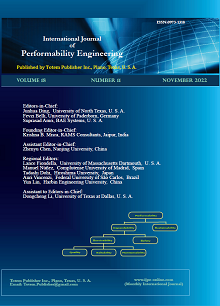-
Multi-Class Classification of Retinal Abnormality using Machine Learning Algorithms
- Lakshmi Kala Pampana, and Manjula Sri Rayudu
-
2022, 18(11):
826-832.
doi:10.23940/ijpe.22.11.p8.826832
-
 Abstract
Abstract
 PDF (319KB)
PDF (319KB)

-
References |
Related Articles
Artery Vein Nicking (AVN) is a retinal vessel abnormality at the crossings of the artery and vein. Early detection of the AVN is very important to predict systemic health disorders and life threatening risk factors. Such retinal vascular abnormality is identified and graded by using the proposed multi class supervised Random Forest machine learning classifier. It is trained with 4 grades of AVN abnormality on the publicly available AV Nicking dataset. The statistical, texture based, grey level and abnormality related features are extracted from the retinal AV Nicked images. The optimal feature set is selected for the classification in such a way that selected features are highly correlated with the target class and less correlated between the features using variance threshold, Pearson correlation, and information gain. Finally, various machine learning (feature based) classifiers namely Random Forest (RF), Naive-Bayes (NB), Adaboost (AB) and Quadrant Discriminative Analysis (QDA), are trained with the optimal feature set. The accuracies in classifying the AVN abnormality as normal, mild, moderate and severe by the classifiers are 94.3%, 93.6%, 70.6% and 50% respectively. The Random Forest classifier with maximum depth of 5 has achieved the highest classification accuracy while maintaining a 0.97 true positive rate at the lowest false positive rate of 0.023. The performance metric: F score for each class individually by multiclass RF classifier is 0.97 (normal), 0.95 (mild), 0.92 (moderate), and 0.94 (severe), and the average precision of the classifier is 0.92.

